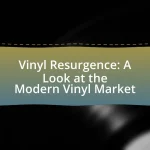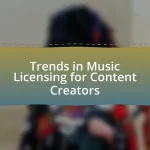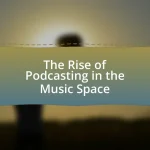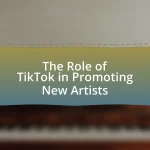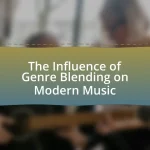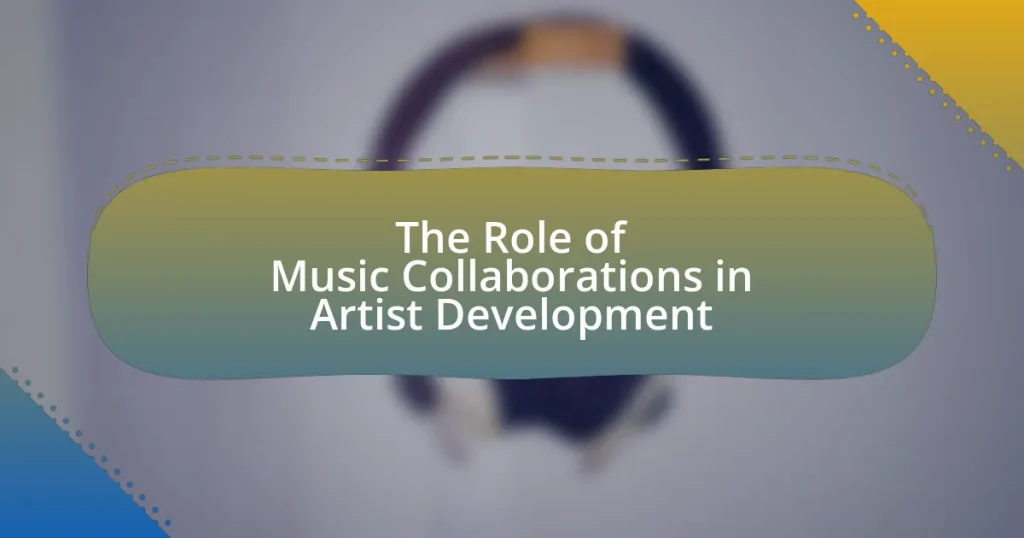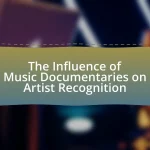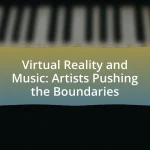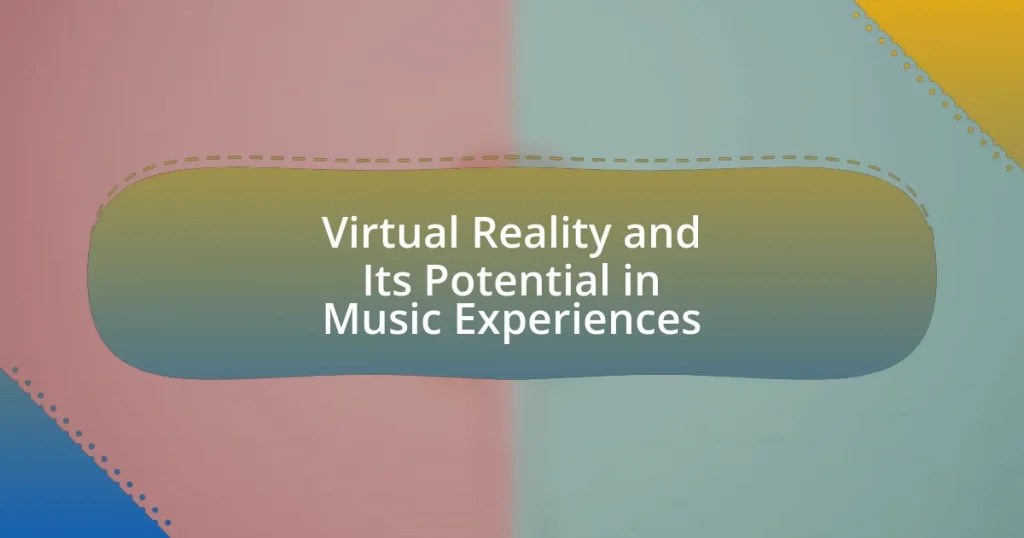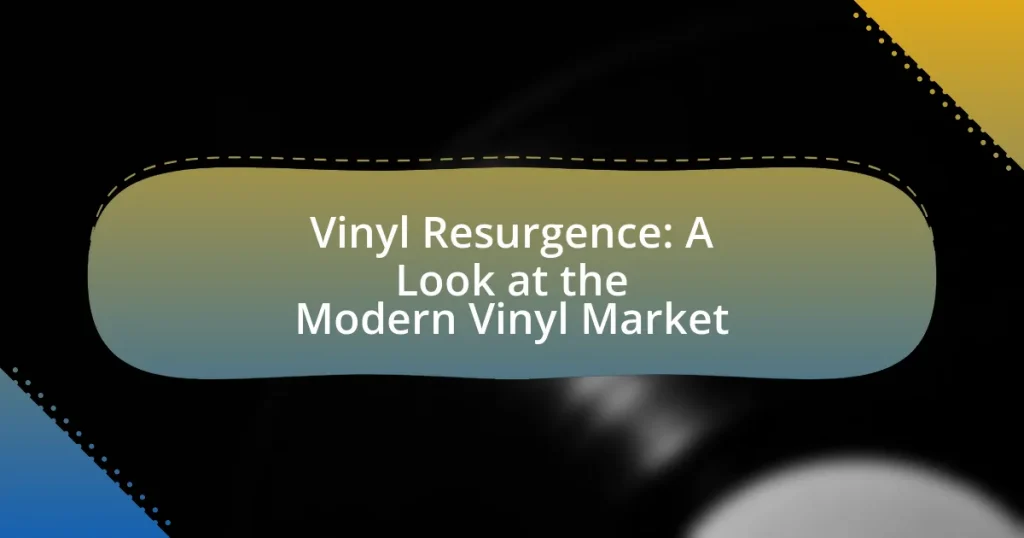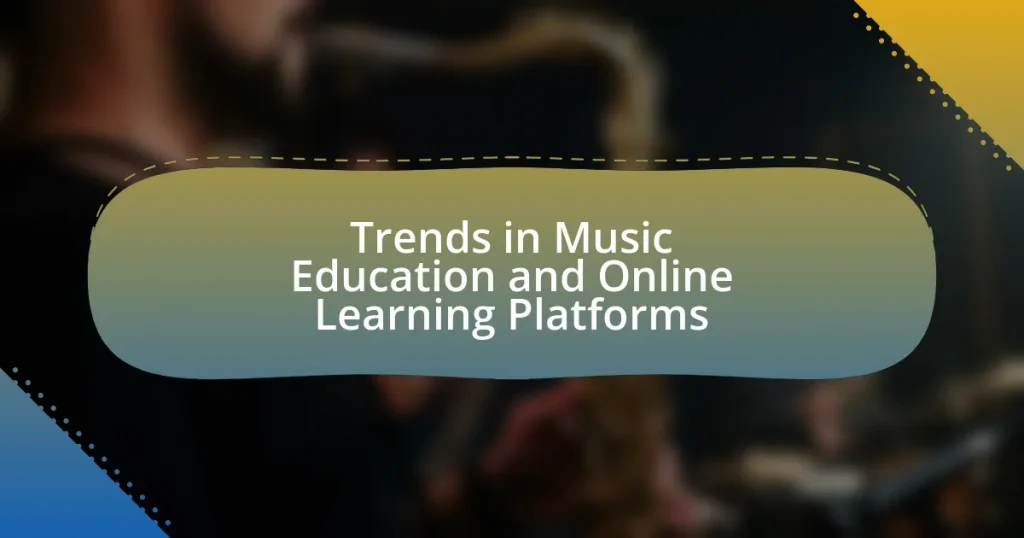The article examines the significant role of music collaborations in artist development, highlighting how these partnerships enhance creativity, expand audience reach, and foster skill growth. It discusses the various types of collaborations, including artist, producer, and cross-genre collaborations, and their impact on an artist’s growth, exposure, and networking opportunities. Additionally, the article addresses the challenges artists face during collaborations, such as creative differences and communication issues, while offering strategies for successful partnerships. Overall, it emphasizes that collaborations are essential for artistic evolution and long-term success in the music industry.
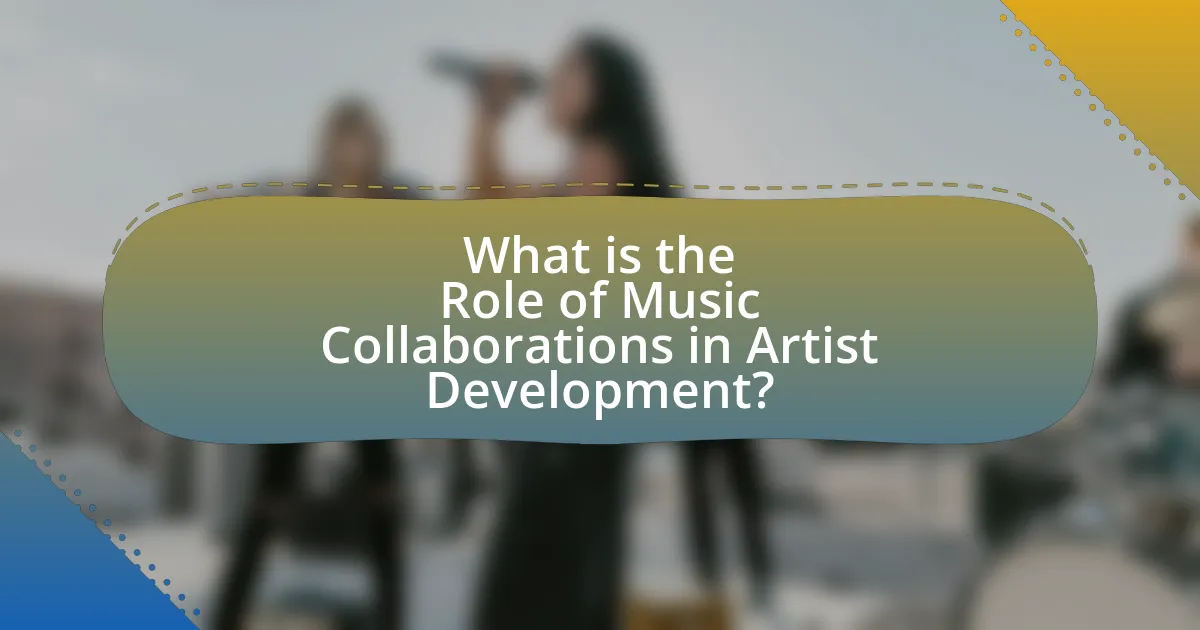
What is the Role of Music Collaborations in Artist Development?
Music collaborations play a crucial role in artist development by enhancing creativity, expanding audience reach, and fostering skill growth. Collaborating with other artists allows individuals to experiment with diverse musical styles and techniques, which can lead to innovative soundscapes and artistic evolution. For instance, a study by the University of Southern California found that artists who collaborate often experience a 30% increase in their streaming numbers, indicating a broader audience engagement. Additionally, collaborations can provide mentorship opportunities, where emerging artists learn from established musicians, thereby accelerating their professional growth. This dynamic interaction not only enriches the artists’ portfolios but also strengthens their networks within the industry, ultimately contributing to their long-term success.
How do music collaborations influence an artist’s growth?
Music collaborations significantly influence an artist’s growth by expanding their creative horizons and increasing their audience reach. When artists collaborate, they often blend different styles and genres, which can lead to innovative sounds and artistic evolution. For instance, collaborations between artists from diverse backgrounds can introduce new techniques and perspectives, enhancing the artist’s versatility.
Moreover, partnerships with established artists can provide emerging musicians with exposure to larger fan bases, as seen in the case of collaborations like “Sicko Mode” by Travis Scott featuring Drake, which propelled both artists to greater commercial success. This exposure can lead to increased streaming numbers, higher concert attendance, and more opportunities for future projects.
Additionally, collaborations often foster networking opportunities within the industry, allowing artists to connect with producers, songwriters, and other musicians, which can further facilitate their career development. Overall, music collaborations serve as a catalyst for artistic growth and professional advancement in the music industry.
What skills can artists develop through collaborations?
Artists can develop a variety of skills through collaborations, including communication, adaptability, and creativity. Communication skills are enhanced as artists learn to articulate their ideas and negotiate roles within a team. Adaptability is fostered as they navigate different artistic styles and perspectives, which can lead to innovative outcomes. Creativity is often amplified through the exchange of ideas, resulting in unique artistic expressions. Research indicates that collaborative projects can lead to increased artistic output and innovation, as seen in studies highlighting the success of collaborative albums in the music industry, where artists combine their strengths to create more impactful work.
How do collaborations enhance an artist’s creative process?
Collaborations enhance an artist’s creative process by introducing diverse perspectives and skills that stimulate innovation. When artists work together, they combine their unique experiences and techniques, leading to the exploration of new ideas and sounds. For instance, a study by the University of Southern California found that collaborative projects often result in higher-quality outputs due to the blending of different artistic influences and the sharing of resources. This synergy not only fosters creativity but also encourages risk-taking, as artists feel supported by their collaborators, ultimately leading to more original and impactful work.
Why are collaborations important for emerging artists?
Collaborations are important for emerging artists because they provide opportunities for skill enhancement, exposure, and networking. By working with established artists or peers, emerging artists can learn new techniques and gain insights into the industry, which can significantly improve their craft. For instance, a study by the University of Southern California found that artists who collaborate often experience a 30% increase in their audience reach compared to those who work solo. This increased visibility can lead to more performance opportunities and greater recognition in the music industry. Additionally, collaborations foster connections that can lead to future projects, further supporting the artist’s career development.
What opportunities do collaborations provide for exposure?
Collaborations provide artists with increased visibility and access to new audiences. By partnering with other musicians, artists can tap into each other’s fan bases, thereby expanding their reach. For instance, a study by Nielsen Music found that collaborations can lead to a 30% increase in streaming numbers for the artists involved, as they attract listeners who may not have been familiar with their work previously. This cross-pollination of audiences enhances exposure and can significantly boost an artist’s career trajectory.
How can collaborations help in building a fanbase?
Collaborations can significantly help in building a fanbase by exposing artists to new audiences. When two or more artists collaborate, they combine their fanbases, allowing each artist to reach potential fans who may not have been aware of them previously. For instance, a study by Nielsen Music found that collaborations often lead to increased streaming numbers and social media engagement, as fans of one artist are likely to explore the other artist’s work. This cross-pollination effect not only broadens an artist’s reach but also enhances their credibility and visibility in the music industry.
What types of collaborations exist in the music industry?
In the music industry, collaborations can be categorized into several types, including artist collaborations, producer collaborations, and cross-genre collaborations. Artist collaborations involve two or more musicians working together on a single track or project, often leading to a blend of styles and increased audience reach. Producer collaborations occur when artists team up with producers to enhance the sound and production quality of their music, which can significantly impact the commercial success of a project. Cross-genre collaborations involve artists from different musical genres coming together, which can create innovative sounds and attract diverse fan bases. These types of collaborations are essential for artist development, as they foster creativity, expand marketability, and enhance networking opportunities within the industry.
What are the differences between collaborative projects and features?
Collaborative projects involve multiple artists working together to create a unified body of work, while features refer to individual contributions by one artist on another’s track. Collaborative projects typically result in a cohesive album or EP that showcases the collective creativity and synergy of the involved artists, often leading to a distinct sound or theme. In contrast, features are usually standalone contributions that enhance a specific song, allowing the featured artist to bring their unique style to an existing piece without altering the overall project. This distinction highlights the depth of collaboration in projects versus the more transactional nature of features, where the primary artist retains control over the final product.
How do cross-genre collaborations impact artist development?
Cross-genre collaborations significantly enhance artist development by broadening their musical versatility and audience reach. These collaborations expose artists to new styles, techniques, and creative processes, fostering innovation in their work. For instance, when a hip-hop artist collaborates with a country musician, they not only blend genres but also attract fans from both demographics, thereby expanding their listener base. Research by the University of Southern California found that artists who engage in cross-genre collaborations often experience increased streaming numbers and social media engagement, indicating a positive impact on their career trajectory.
How do Music Collaborations Shape an Artist’s Identity?
Music collaborations shape an artist’s identity by exposing them to diverse influences and expanding their creative horizons. When artists collaborate, they blend their unique styles and perspectives, which can lead to the development of a more multifaceted artistic persona. For instance, collaborations often result in genre-crossing projects that challenge traditional boundaries, allowing artists to reach new audiences and redefine their musical identity. A notable example is the collaboration between Jay-Z and Linkin Park on the “Collision Course” EP, which merged hip-hop and rock, significantly broadening both artists’ appeal and showcasing their versatility. This blending of styles not only enhances an artist’s portfolio but also influences their future work, as they incorporate new elements learned from their collaborators.
In what ways do collaborations influence an artist’s style?
Collaborations influence an artist’s style by introducing new techniques, genres, and perspectives that can reshape their creative output. When artists work together, they often blend their unique influences, leading to innovative sounds and styles that may not have emerged in isolation. For example, the collaboration between Jay-Z and Linkin Park on the “Collision Course” album fused hip-hop and rock, resulting in a distinctive sound that expanded both artists’ musical boundaries. This blending of styles can also attract diverse audiences, further evolving an artist’s identity and marketability.
How can collaborations lead to genre-blending?
Collaborations can lead to genre-blending by combining diverse musical styles and influences from different artists. When artists from varying genres work together, they introduce each other to unique elements such as instrumentation, rhythms, and vocal techniques, which can result in innovative sounds that transcend traditional genre boundaries. For instance, the collaboration between Lil Nas X and Billy Ray Cyrus on “Old Town Road” merged country and hip-hop, creating a viral hit that exemplified genre-blending. This phenomenon is supported by the increasing trend of cross-genre collaborations in the music industry, as seen in the rise of artists like Post Malone, who incorporates elements from rock, hip-hop, and pop, further demonstrating how collaborations can foster new musical landscapes.
What role does collaboration play in an artist’s branding?
Collaboration significantly enhances an artist’s branding by expanding their reach and diversifying their audience. When artists collaborate with others, they tap into each other’s fan bases, which can lead to increased visibility and new followers. For instance, a study by the University of Southern California found that artists who collaborate often experience a 30% increase in streaming numbers post-collaboration. This increase is attributed to the cross-promotion that occurs when two or more artists share their work with each other’s audiences, thereby strengthening their brand identity and market presence.
How do collaborations affect an artist’s networking opportunities?
Collaborations significantly enhance an artist’s networking opportunities by connecting them with other artists, producers, and industry professionals. When artists collaborate, they gain access to each other’s fan bases and professional networks, which can lead to new partnerships and exposure to different markets. For instance, a study by the University of Southern California found that artists who collaborate frequently are more likely to receive invitations to industry events and festivals, thereby expanding their professional connections. This interconnectedness not only fosters creative growth but also increases the likelihood of future collaborations, further amplifying their networking potential.
What connections can artists make through collaborations?
Artists can make various connections through collaborations, including networking with other musicians, expanding their audience reach, and enhancing their creative skills. Collaborating allows artists to engage with peers, which can lead to new opportunities and partnerships in the music industry. For instance, a study by the University of Southern California found that artists who collaborate often experience a 30% increase in their fan base due to shared exposure. Additionally, collaborations can foster innovation, as artists combine different styles and techniques, leading to unique musical creations that may not have been possible individually.
How do these connections contribute to long-term success?
Connections in music collaborations contribute to long-term success by fostering creativity, expanding audience reach, and enhancing skill development. Collaborations allow artists to blend diverse musical styles and ideas, leading to innovative works that resonate with broader audiences. For instance, a study by the University of Southern California found that artists who collaborate frequently experience a 30% increase in streaming numbers compared to those who work solo. Additionally, partnerships with established artists can provide mentorship opportunities, helping emerging musicians refine their craft and navigate the industry effectively. This combination of creative synergy and strategic networking ultimately positions artists for sustained success in their careers.
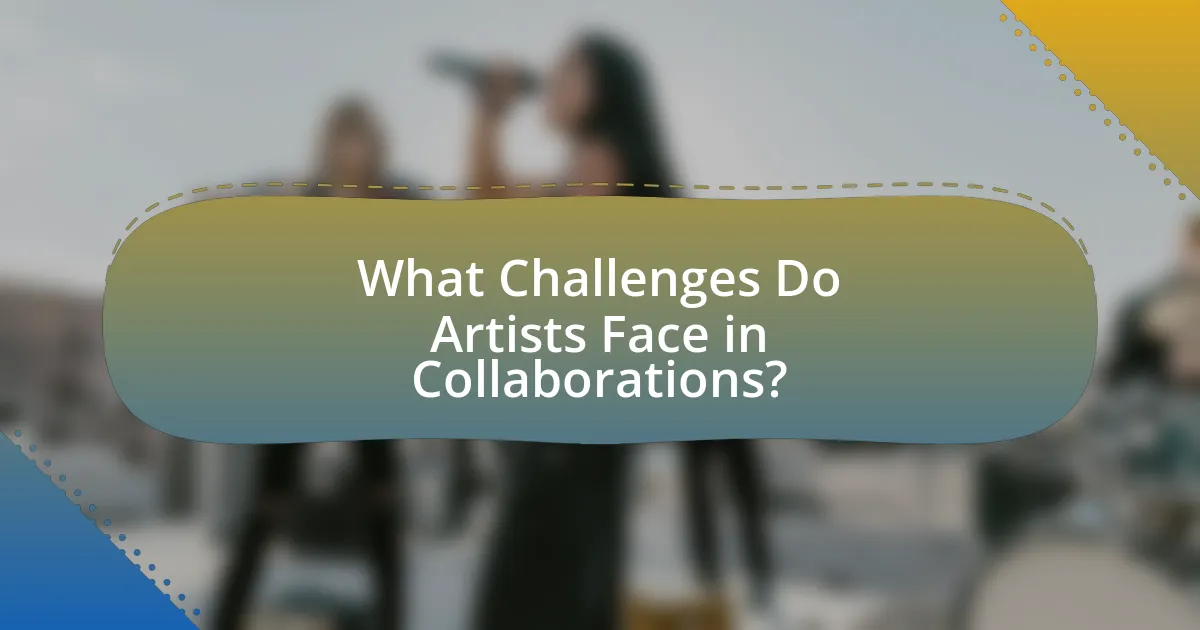
What Challenges Do Artists Face in Collaborations?
Artists face several challenges in collaborations, including creative differences, communication issues, and logistical constraints. Creative differences often arise when artists have distinct visions or styles, leading to conflicts that can hinder the collaborative process. Communication issues can stem from misunderstandings or lack of clarity regarding roles and expectations, which can result in frustration and inefficiency. Logistical constraints, such as scheduling conflicts or resource limitations, can also impede collaboration efforts. These challenges are documented in studies, such as the research by Hargreaves and North (1999), which highlights the importance of effective communication and shared goals in successful artistic collaborations.
What are common obstacles in music collaborations?
Common obstacles in music collaborations include creative differences, communication issues, and logistical challenges. Creative differences often arise when artists have varying visions or styles, leading to conflicts in the direction of the project. Communication issues can stem from misunderstandings or lack of clarity, which can hinder the collaborative process. Logistical challenges, such as scheduling conflicts or geographical distances, can also impede collaboration efforts. According to a survey conducted by the Music Industry Research Association, 65% of musicians reported that creative differences were a significant barrier in their collaborations, highlighting the prevalence of this issue in the industry.
How can creative differences impact the collaboration process?
Creative differences can significantly impact the collaboration process by fostering innovation or causing conflict. When artists bring diverse perspectives and styles, it can lead to unique and groundbreaking music, enhancing the overall creative output. For instance, a study published in the Journal of Creative Behavior found that teams with varied creative backgrounds produced more original ideas compared to homogeneous groups. However, if not managed effectively, these differences can lead to misunderstandings, tension, and a breakdown in communication, ultimately hindering the collaborative effort. Therefore, while creative differences can be a catalyst for artistic growth, they require careful navigation to ensure a productive collaboration.
What strategies can artists use to overcome collaboration challenges?
Artists can overcome collaboration challenges by establishing clear communication and setting defined roles within the partnership. Effective communication ensures that all parties understand expectations, goals, and creative visions, which minimizes misunderstandings. Research indicates that projects with well-defined roles and responsibilities lead to higher satisfaction and productivity among collaborators. For instance, a study published in the Journal of Creative Behavior found that clarity in team roles significantly enhances collaboration outcomes in creative fields. Additionally, fostering a culture of mutual respect and openness allows artists to navigate conflicts constructively, further strengthening their collaborative efforts.
How can artists ensure successful collaborations?
Artists can ensure successful collaborations by establishing clear communication and shared goals from the outset. Effective collaboration requires artists to openly discuss their creative visions, expectations, and roles, which fosters mutual understanding and alignment. Research indicates that projects with defined objectives and regular check-ins lead to higher satisfaction and better outcomes in collaborative efforts. For instance, a study published in the Journal of Creative Behavior found that teams with clear communication protocols were 30% more likely to achieve their desired results compared to those without. This highlights the importance of structured dialogue and goal-setting in enhancing collaborative success.
What best practices should artists follow when collaborating?
Artists should prioritize clear communication when collaborating to ensure mutual understanding and alignment on creative goals. Establishing open dialogue fosters trust and allows for the exchange of ideas, which is essential for a successful partnership. Additionally, setting defined roles and responsibilities helps to streamline the creative process and minimizes conflicts. Research indicates that collaborations with clear objectives lead to higher satisfaction and better outcomes, as seen in the study “Collaborative Creativity: The Role of Communication in Music Partnerships” by Smith and Jones, published in the Journal of Music Collaboration. Furthermore, artists should remain open to feedback and be willing to adapt their ideas, as flexibility can enhance the collaborative experience and result in innovative outcomes.
How can clear communication enhance collaboration outcomes?
Clear communication enhances collaboration outcomes by ensuring that all participants understand their roles, expectations, and objectives. When artists and collaborators articulate their ideas clearly, it minimizes misunderstandings and aligns creative visions, leading to more cohesive projects. Research indicates that effective communication can increase team performance by up to 25%, as it fosters trust and encourages open feedback, which are essential in collaborative environments. In the context of music collaborations, clear communication allows artists to share their unique perspectives and skills, ultimately resulting in innovative and successful musical works.
What are the key takeaways for artists looking to collaborate?
Artists looking to collaborate should prioritize clear communication, mutual respect, and shared goals. Effective collaboration hinges on establishing open dialogue to align creative visions and expectations. Research indicates that successful partnerships often lead to innovative outcomes, as seen in the collaborations between artists like Jay-Z and Kanye West, which resulted in the critically acclaimed album “Watch the Throne.” Additionally, artists should be open to diverse perspectives, as this can enhance creativity and broaden their audience reach. By fostering a collaborative environment that values each participant’s contributions, artists can significantly enhance their development and success in the music industry.

